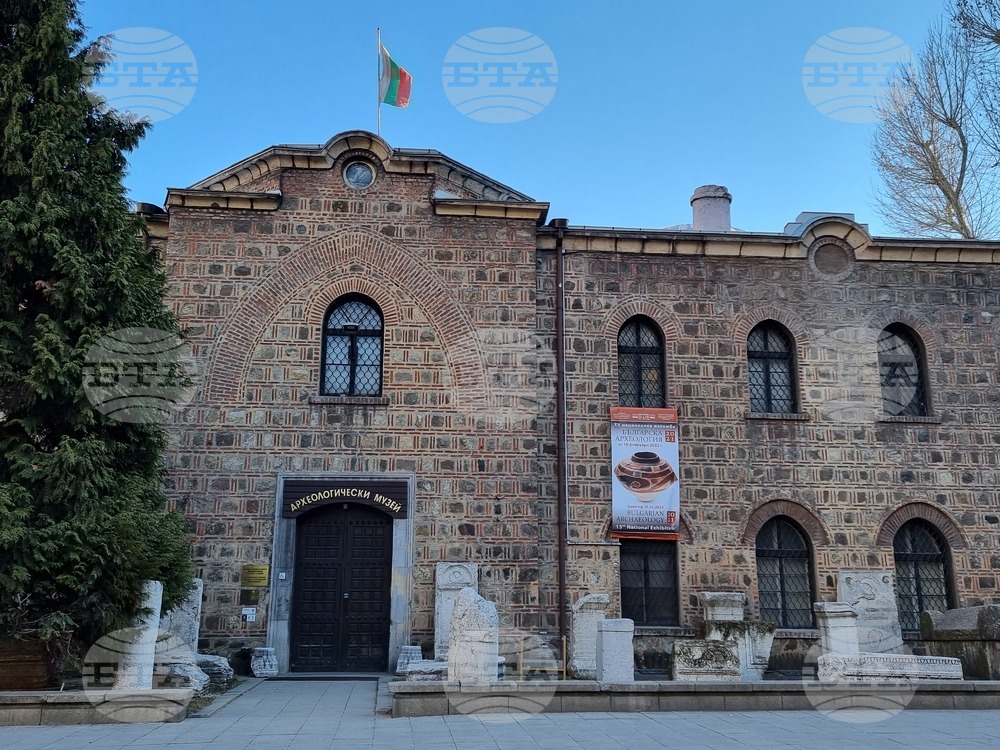site.btaFourteen Bulgarian Museums to Participate in Exhibition at Getty Museum in LA


Fourteen museums from Bulgaria with a total of over 150 objects will participate in a forthcoming exhibition of Thracian treasures at the J. Paul Getty Museum in Los Angeles, USA. The finds will be on display from November 3 to March 3, 2025, the National Archaeological Institute with Museum at the Bulgarian Academy of Sciences (NAIM-BAS) told BTA.
The team noted that Bulgarian objects represent more than 90% of all exhibits included in the exhibition.
"The work on the exhibition Ancient Thrace and the Classical World: Treasures from Bulgaria, Romania, and Greece began back in 2018, when Dr. Timothy Potts, Director of the Getty, and Dr. Jeffrey Spier, at that time senior curator of the museum's Antiquities collection, came to visit NAIM-BAS. During the preliminary talk, they presented their idea for an exhibition dedicated to ancient Thrace, which would be part of a series organized by the Getty Museum on different parts of the ancient world. So far, Egypt and the Ancient World (2018) and Ancient Iran and the Ancient World (2022) have taken place, and exhibitions on Phoenicia and Anatolia are forthcoming," said Assoc. Prof. Dr. Margarit Damyanov from NAIM-BAS.
According to him, ancient Thrace occupies its natural place in this ambitious plan to present to the world, over the course of a decade, the interactions of different cultures in the Mediterranean and beyond. "Since the core of the ancient Thracian lands coincides with the territory of today's Bulgaria, the Getty Museum sought a partnership with the Bulgarian Ministry of Culture and with NAIM-BAS, which is the oldest and leading institution in the field of research of the country's ancient cultural heritage. After a lengthy preparatory phase and delays due to the COVID-19 pandemic, a tripartite agreement was signed in April 2023 between the Getty Museum, the Ministry and NAIM-BAS, according to which the two Bulgarian institutions are official co-organizers of the exhibition," Damyanov explained.
Fourteen Bulgarian museums are taking part in the exhibition. The largest contributors are the National Archaeological Museum in Sofia, the Regional Archaeological Museum in Plovdiv, and the Historical Museum "Iskra" in Kazanlak. Historical finds have also been provided by the regional history museums of Burgas, Veliko Tarnovo, Vratsa, Lovech, and Targovishte, the history museums of Karnobat, Nessebar, Septemvri, Strelcha, Sozopol, and the National Museum of History.
"The exhibition features discoveries, emblematic for ancient Thrace, such as the Valchitran gold treasure, the Panagyurishte gold treasure, the complex of objects from the mound of Golyama Kosmatka near the town of Shipka, vessels from the Rogozen treasure, and many others. The artefacts included in the exhibition cover a period of over two millennia - from the late Bronze Age (2nd millennium BC) to the time of the Roman Empire - and illustrate the important place of Thrace in the ancient world," Damyanov pointed out, adding that the world's leading museums have also provided objects from their collections: the Louvre Museum in Paris, the British Museum, the Metropolitan Museum in New York and the Getty Museum itself.
In his view, the large-scale conception of the exhibition Ancient Thrace and the Classical World has led to a very positive precedent in the field of international cooperation in the study of Thracian cultural heritage. The ancient Thracian lands extend beyond the modern borders of Bulgaria, over parts of present-day Turkiye, Greece, Romania, Serbia and North Macedonia, and this is the first time that exhibits from Greece and Romania have been included in such an exhibition.
"The scientific significance of the included objects is great. On the Greek side, the museums of Samothrace and Alexandroupolis participate with inscriptions in the Thracian language with Greek letters from the Aegean coast of Thrace, testifying to the coexistence of Hellenes and Thracians. Together with the Thracian stone inscription from Kolmen village near Shumen, and the one on the gold ring from Ezerovo near Plovdiv, the exhibition at the Getty Museum will bring together for the first time in history all the most important surviving written monuments in the Thracian language," said the Associate Professor.
He pointed out that the National History Museum in Bucharest is participating with the finds from the tomb at Agighiol in Northern Dobruja. The parallels of the objects refer to world-famous finds from Bulgaria, such as the silver knee pads from the Mogilan mound in Vratsa and the Golyama mound at Malomirovo and Zlatinitsa in the Elhovo region. The inscriptions on silver vessels from Agighiol mention the Thracian king Cotys and testify to the power of the Odrysian kingdom in the 4th century BC.
"This regional cooperation, focusing on the common cultural heritage of the Balkans, is only one of the aspects that make the Ancient Thrace and the Classical World exhibition a very significant cultural and scientific event. The magnificent catalogue with a circulation of 5,000 copies, which has gathered texts by prominent Bulgarian specialists, but also by scholars from Great Britain, the USA, Romania and Greece, will be widely distributed and will present in a dignified way to the world the treasures of ancient Thrace and the achievements of Bulgarian institutions in terms of their preservation and research", said Assoc. Prof. Dr. Margarit Damyanov.
/DS/
news.modal.header
news.modal.text